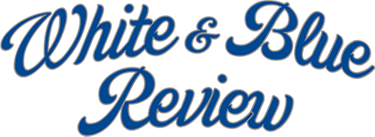I actually left Barrett’s Saturday afternoon in a decent mood, all things considered. Creighton’s College Cup loss on penalty kicks was fresh on my mind, and the Bluejays men’s basketball team had just given up 80 points in a road loss at St. Joseph’s. But when your school’s playing for a national title in one sport and has just lost its first game of the college basketball season in December, it is difficult to complain.
The Bluejays were killed on the glass (minus-12 on the boards) and cold from the field (take away Doug McDermott’s 10-for-16 shooting and the Jays shot just 37.7% from the floor). Still, they had a shot to win midway through the second half. One St. Joseph’s Hawk, forward Halil Kanacevic, had as many offensive rebounds (6) as the entire Creighton team. McDermott’s 26 weren’t good enough for game-high honors, as Carl Jones scored 29 for St. Joe’s. And CU’s normally steady bench production didn’t show up, as the Hawks out-produced the Jays’ subs 20-6.
If you’re going to lose in the non-conference, it has to be to a good team on the road. Those are forgivable offenses, and come March can sometimes be seen as “good losses.” I hate that term, but it is true. In the college hoops landscape controlled by Talking Heads at ESPN, a 9-point road loss at St. Joe’s — one that brings the Hawks’ student section rushing onto the court — might be disappointing, but isn’t detrimental to the possibility of an at-large bid to the NCAA Tournament.
Because let’s face it. At this point, with the publicity swirling around this team and its star, anything less than a trip to the Big Dance will be a disappointment. Never mind that the top half of the Valley looks as competitive as it has since the league last got multiple teams into the NCAA Tournament. The Jays have to find a way to bring the program back to the only postseason that matters. And this loss can go a long way to serving as a learning experience for the next two-thirds of the season.
That being said, here are a few thoughts.
Have we run out of superlatives to describe Doug McDermott?
He’s only 8 games into his sophomore season, but Creighton fans are spoiled getting to watch Doug McDermott play. His ability to finish with both hands in the frontcourt and hit shots on the perimeter is a combination Creighton fans aren’t use to. He left his mark in Philly, scoring 26 points and grabbing 10 rebounds in 36 minutes. Opposing teams’ announcers start man-crushing on McDermott the moment they see him play, and Joe Lunardi was no exception. Can you blame him, or the others?
McDermott’s currently second in the nation in scoring per game. He’s shooting 62.6% from the field (top 50 nationwide) and 60.6% from 3-point range (tops nationally). He’s in the top 40 nationally in rebounds per game, too (9.1). Entering the weekend, McDermott was second nationally among all active sophomores in total points, sandwiched between All-America candidates J.J. Sullinger and Harrison Barnes.
That stat’s courtesy of Creighton’s Sports Information Department. And if you want more amazing statistical evidence that we are all Witnesses to what could be the best player in Creighton history, thumb through any of Rob Anderson’s pregame notes. A few highlights from before the St. Joe’s game (again, when McDermott went for 26 and 10):
- He was the first Bluejay since the school’s all-time leading scorer Rodney Buford to record seven or more 20-point games. Buford had eight in a row in 1997, and after the St. Joe’s game McDermott can match that streak with 20-plus against Houston Baptist this weekend.
- McDermott entered the weekend with three straight double-doubles, and with his effort against the Hawks matched Nate King’s four in a row in the 1993-94 season. Next on the list? McDermott went to Philly as the first CU player since Benoit Benjamin to record at least three straight games of 20 or more points and 10 or more rebounds. 26 and 10 later, he needs only one more such game against Houston Baptist to match Benjamin’s five consecutive 20/10s from the 1985 season.
- If the season ended right now, McDermott would have the third-best single season scoring mark in school history and the most points per game since Bob Portman scored 26.2 a game in 1968-69.
- Through 46 games in his career, McDermott had scored 747 points (16.2 ppg). During that same timeframe, Buford scored 738 (16.0 ppg).
And here’s one of my favorites. Including the trip to the Bahamas, Creighton’s exhibition game against Rockhurst, and the seven games before St. Joe’s, McDermott scored 282 points in 305 minutes. That’s ridiculous.
That being said, your best player can’t go 10 minutes without a shot.
After a rough start to the game, Gregory Echenique came on in the early minutes of the second half. Echenique played only 7 minutes in the first half, picking up his second foul with 9:37 to play in the opening frame. But the Bluejays pounded the ball into the paint to start the second stanza, letting Echenique try to establish himself offensively. He scored the first three hoops of the half for the Jays, with the third coming off an offensive rebound of his own miss.
Meanwhile, McDermott didn’t have a shot attempt during the first 10 minutes of the half. The Bluejays treaded water during that stretch; they were down 5 to start the stanza, and McDermott’s first basket of the half cut the St. Joe’s lead to 5 again. During that stretch the Hawks opened up the lead to as many as 10 points.
Countless times during those 10 minutes, I turned to Panon and verbalized my disgust that McDermott wasn’t getting shots. By that point it was painfully obvious that the rest of the team was cold from the floor: subtracting McDermott’s 5 of 10 shooting in the first half, the Jays shot 27%. I understand that the Bluejays have a few offensive weapons, but when many of those aren’t working and your BMOC is hitting from everywhere it might be time to turn the game over to him.
McDermott scored 12 points over the final 10 minutes of the game. He only missed one shot, hit both of his 3-point attempts, and grabbed 6 rebounds while he was at it. And Antoine Young hit a couple of 3s, too, including one that gave him more than 1,000 points for his Creighton career. The team greatly improved its shooting percentage in the second half, hitting at a 55% clip. But as I left the bar I wondered what the outcome might have been had McDermott, the team’s hot hand, taken a few more shots early in the second half.
Creighton still flaunts some gaudy statistics, but assist-to-turnover ratio is heading the wrong direction.
The Bluejays committed 14 turnovers against St. Joe’s, with 10 of those coming from guards. The Jays dished 15 assists, led by Grant Gibbs’ team-high 5. The Jays are fifth in the nation in assist-to-turnover ratio, and lead the country in assists per game. But against better defensive teams like Nebraska and St. Joe’s, Creighton committed just as many turnovers (31) as they dished dimes (30).
Saturday, St. Joe’s scored 15 points on Creighton’s 14 miscues. And I’m sure it was due to the Guinness, but I could have sworn Creighton’s turnovers came at just about the worst times possible. After McDermott hit his first shot of the second half, and the Jays were within 5, CU forced a St. Joe’s turnover. But Josh Jones gave the ball right back and Carl Jones converted a layup to move the Hawks’ lead to 7. Two trips later McDermott connected again, cutting the deficit to 3 points. But a three-point play by Ronald Roberts and a missed 3 by Young that turned into a Carl Jones layup moved the St. Joe’s lead back out to 8. Needing a play to regain some footing and hush the boisterous crowd, Creighton’s Josh Jones instead turned the ball over again.
These mistakes happened at a critical point in the game. They were the kinds of mistakes the Jays didn’t make on the road at San Diego State, in a game they ultimately came back and won. To win on the road — and to storm back from double digits against a good team — you can’t give up scoring opportunities. Looking ahead, teams like Tulsa, Northwestern, Missouri State, and Wichita State have the ability to make
The St. Joe’s game worries me when thinking about Wichita State.
There, I said it. Half of St. Joe’s points came from guards Carl Jones (29) and Langston Galloway (12). I thought Creighton’s defensive effort was pretty good for most of the first half and stretches in the second, but ultimately the Hawks’ guards gave the Jays fits. Add athletic and rangy wing players like C.J. Aiken and Ronald Roberts to the mix, and St. Joe’s embodied the type of team that’s given Creighton problems in the past — and frustrated the Jays on Saturday.
The Shockers may be as balanced a team as the Bluejays will face all season, at least along the perimeter. A lot of that steadiness comes from Gregg Marshall’s guards, guys like Toure Murry (13.5 ppg, 5 rpg, 3.3 apg), Joe Ragland (12.5 ppg, 3.1 apg, 3.5 rpg), David Kyles (10.7 ppg, 4.6 rpg, 3.2 apg), and even lesser producers like Demetric Williams and Tekele Cotton.
New Year’s Eve isn’t far away. The Bluejays blew a chance to steal a road win at Koch Arena last season. A win in Wichita this year could be the difference between winning a Valley championship and drawing the #2 seed for Arch Madness. And I fully understand that Creighton plays four more teams before the Shockers, including a tough road opponent in Tulsa (where WSU won by 10) and difficult home games against Northwestern and Missouri State. The Jays went 0-4 against the Wildcats and Bears last season, and Tulsa is 4-6 but with close losses to Missouri State (by 5), Oklahoma State (by 3), and Arizona State (by 3).
Still, it isn’t too early to begin breaking down what looks to be Creighton’s toughest conference road game. The defense on the perimeter will need to improve during the next four games to entertain the idea of kicking the New Year off with a win in Wichita.

